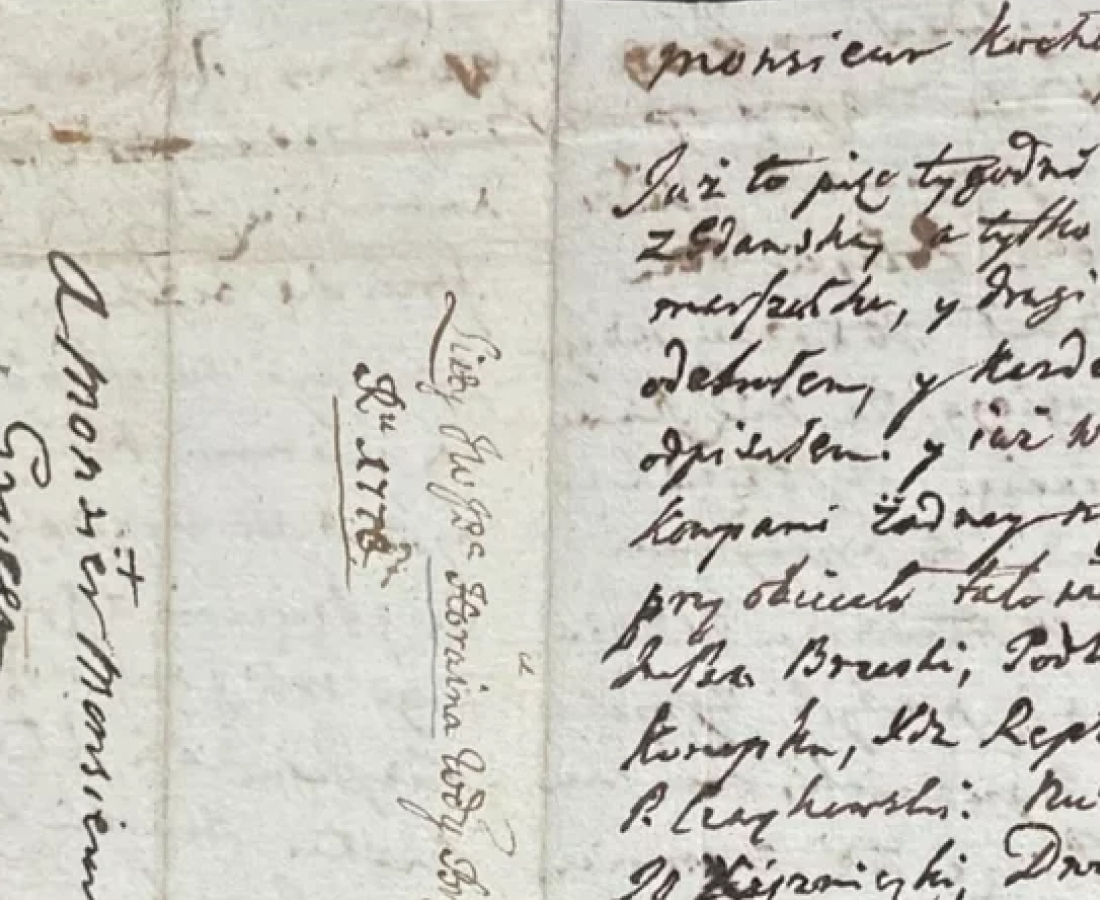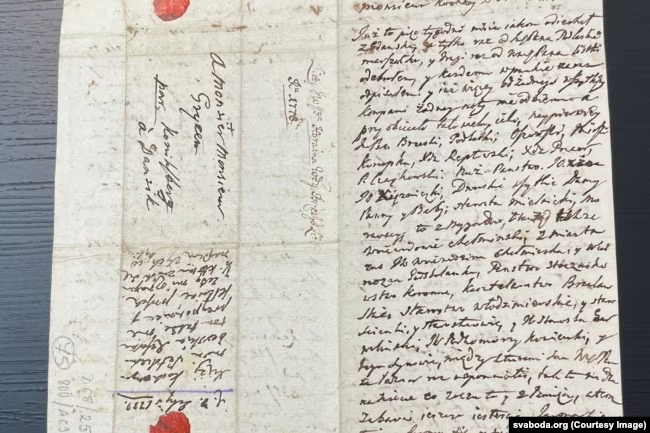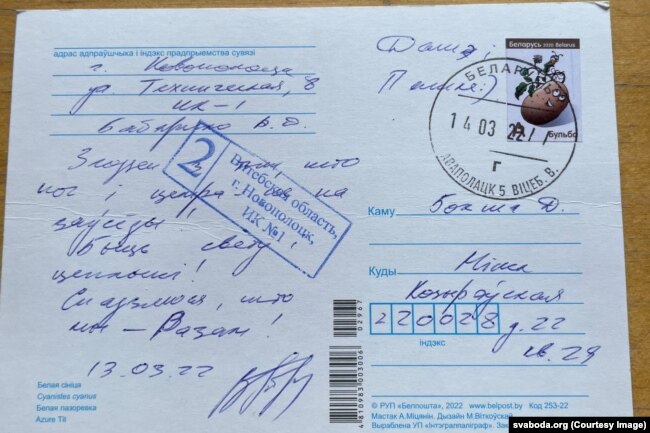
The Museum of Free Belarus was founded in Warsaw in July 2022. It was initially created to collect, preserve, study, and promote historical and cultural phenomena and artifacts reflecting the Belarusian people’s struggle for democratic values. Until recently, all exhibits were connected to the 2020 protests. However, the museum has now acquired an artifact dating back to 1773.
The museum’s director, Natallia Zadziarkouskaya, explained that they decided not to limit themselves to the events of 2020 — including repressions, items from prisons, and letters from political prisoners — but to gradually transform the institution into a classical museum.

Belarusian historians collaborating with the museum constantly monitor what appears on online auctions in Poland, as many artifacts that end up on auction sites may be related to Belarusian history.
Sometimes, original documents appear that could also interest the National Historical Archives of the Republic of Belarus: letters, charters, and privileges from the 16th–17th centuries. Often, such documents enter the antiquarian market from private archives of noble families. In Belarus, it is difficult to imagine that 300-year-old documents could be preserved in private archives, whereas in Poland this is a common phenomenon, explained a historian working with the museum who agreed to speak anonymously to Svaboda.
Recently, researchers discovered several lots related to Belarusian history and culture on a Polish auction site. Some items were “mass-produced,” such as books published in large quantities.
“One book put up for auction was so expensive that we didn’t even attempt to bid — Perehriatsia u Sviatuiu Zemliu (‘Pilgrimage to the Holy Land’) by Mikołaj Krzysztof Radziwiłł. It recounts his journey to Palestine. The book is valuable and interesting, but we could not afford it. It seems, however, that it eventually ended up in the hands of Belarusians.”

Researchers also came across portraits of Kościuszko, images of volunteers participating in Kalinoŭski’s uprising, printed in the French press of the time (these were “mass-produced” items), as well as an extract from the act books of the Slonim magistrate, though it was a secondary copy made from the original, the historian notes when recalling interesting finds on Polish auction sites.
Finally, specialists focused on a letter written on July 17, 1773, by Jan Antoni Harain, a statesman of the Grand Duchy of Lithuania and participant in the Bar Confederation, who at that time served as Voivode of Brest.
The letter was composed during a period of intense political conflict in the Polish–Lithuanian Commonwealth after its First Partition, when fierce struggles unfolded among various political factions backed by Russia, Prussia, and Austria.
“At that time, the Commonwealth was full of Russian spies and Russian and Prussian troops. The state had become a ‘pass-through courtyard.’ They used to say about the Commonwealth: ‘If you don’t have your own army, you will feed the armies of other states.’ Even then, there were still patriots on the territory of Belarus, of the Commonwealth, who were fiercely determined to preserve the state. One of these patriots was Jan Antoni Harain,” the historian observes.
Harain participated in confederations (political unions) opposing kings August II the Strong and Stanisław August Poniatowski, including the Bar Confederation.
“The Bar Confederation itself was an armed resistance to a king who followed Russia’s lead and inclined toward the Partition of the Commonwealth. The Confederation sought to prevent this. A person who defended the integrity of his state with arms in hand was a patriot.
In a sense, this resonates with contemporary challenges for Belarus and current global events. It fits perfectly with our theme — showcasing the struggle of Belarusians for independence, dignity, human rights, and their national interests,” the historian notes.

The author of the letter employed precautionary measures, encrypting much of the content due to the fact that correspondence at the time was routinely monitored and censored, the historian explains.
“Researchers from the auction house who examined the document came to the following conclusions. First, the letter was written secretly. It is full of hints and half-hints. It is unclear exactly to whom the letter was addressed; the envelope bears the name ‘Grycen’, but no such person appears in city records or lists of notable figures.
The author also encoded his own name — at the bottom, one can see ‘J Niaroh’, which, when read backward, reveals ‘Horain’. There is also a ‘greeting’ to the Russian ambassador in the Commonwealth, Shtakelberg. It seems the author sought to protect the letter from prying eyes by suggesting a connection to Russian authorities, or perhaps it was ironic — as if to say, ‘I know you are reading me anyway!’”
Researchers also noted that a typical red wax seal would normally be stamped with a personal signet ring to identify the sender. This letter, however, was sealed without a signet impression, ensuring the author’s anonymity.

The letter discusses political events of the time. Harain mentions recently attending a meeting with two other voivodes and representatives of a princely family (possibly the Radziwiłłs). He also refers to his nephew, Jan Nepomucen, who would later participate in Tadeusz Kościuszko’s uprising, writing a somewhat cryptic phrase about him: “he has great abilities, and because of that he does very little.” The historian believes this may have been intentionally encoded by Harain.
“There are several phrases indicating that Harain himself was under pressure to sign something — possibly to legitimize the Partition of the Commonwealth. Harain states he will not agree to any such thing. This makes the letter clearly political. For specialists studying the era, this is a fascinating document. Perhaps researchers will one day decode the messages that Jan Antoni Harain embedded in it,” the historian hopes.
The acquisition of this artifact at auction was made possible thanks to the support of the Embassy of the Kingdom of the Netherlands in Warsaw on behalf of the Museum of Free Belarus.
The museum currently holds over 200 exhibits. Recent additions include:
There is also a flag listing the names of Belarusian political prisoners. The concept and execution were by journalist Maria Hryts. The fabric measures 1.5 meters wide and about 6 meters long, featuring the names of over 2,500 recognized political prisoners, with new names being added continually.

The exhibition features prison uniforms of political detainees with yellow tags, pink floral dresses worn by women in Gomel Colony No. 4, personal belongings of prisoners, letters, postcards, and drawings.
Among the items are a postcard signed by presidential candidate Viktar Babaryka, who was sentenced to 14 years in prison, and a letter from artist Ales Pushkin, tortured in Grodno Prison No. 1 in July 2023. In the letter, the artist drew a self-portrait with colored pencils.

Former political prisoner and Radio Svaboda journalist Ales Gruzdzilovich recently donated many of his belongings and drawings from Mogilev Correctional Colony No. 15 to the Museum of Free Belarus.
This year, the Polish Ministry of Culture supported two museum projects: the creation of a virtual exhibition on a publicly accessible platform and the digitization of 200 museum artifacts, explained the museum’s director, Natallia Zadziarkouskaya.
Upcoming events include a meeting on April 8 with writer Alhierd Bacharevič and poet Yuliya Timafeyeva, International Day of Solidarity with Belarusian Political Prisoners, and Museum Night on May 17.
Original article: Radio Svaboda